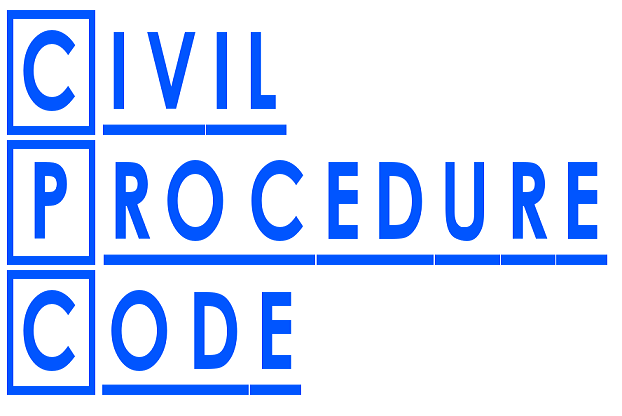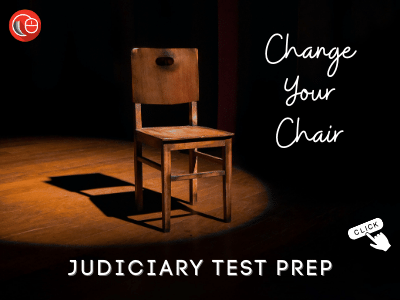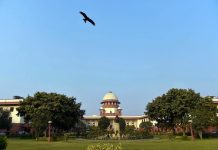This article is written by Oishika Banerji from Amity Law School, Kolkata. This article deals with Order 1 to 21 of the Code of Civil Procedure, 1908.
Table of Contents
Introduction
The Code of Civil Procedure,1908 governs the procedure of the Courts of Civil Judicature. A Code, as defined under Section 2 (1) of the Code of Civil Procedure, 1908, is generally a set of rules that regulates the locomotion of a case in a court. The Code of Civil Procedure, 1908 being a procedural law by nature administers civil proceedings in the Indian territory and therefore is recognized as a Code. The Code is made up of 158 sections comprising the substantive part of the Code, and 51 orders comprehending the procedural aspect of the Code. Although there are 51 orders in the Code, this article will specifically focus on the first 21 orders that lays down the basic civil procedure to be followed by a civil court in a case hearing.
Before proceeding solely with orders, it is necessary to understand the difference between order, decree, and judgment under the Code of 1908 in order to eliminate any kind of confusion.
- Order: Defined under Section 2(14) of the Code of 1908, the order simply provides as to how a case will move forward in a civil court. As the provision provides, order connotes the formal expression of a Civil Court’s decision, but expressly excludes a decree.
- Decree: Defined under Section 2(2) of the Civil Procedure Code, 1908, the decree is also a formal expression of an adjudication that lays down the rights of the parties in a civil case that are the plaintiff, and the defendant. A decree must have the following essential; the rights of the parties, the suit, adjudication, conclusive determination of the decided rights of the parties, and should be in writing.
- Judgment: Defined under Section 2(9) of the Code of 1908, a judgment is a statement delivered by the Judge in a civil case on the basis of the order, or the decree previously passed by him, or her, to the parties involved in the case. A judgment must consist of the statement of facts, the determining points, the decision of the court, and the reason behind the court’s decision.
Order 1 to 21 of the Code of Civil Procedure, 1908
As the Code of Civil Procedure, 1908 is a very significant, and relevant civil procedural law, knowledge about the Orders stands indispensable. Along with that for preparation of any legal competitive examinations, this statute cannot be ignored. Remembering the orders often becomes difficult and therefore, along with the legal explanation, a simple interpretation has also been provided hereunder to make the civil procedure easy to be understood by individuals of both legal, and non-legal background.
Order 1: Parties to Suit
There are always two parties involved in a case. For a civil case, these two parties are referred to as the plaintiff, who is responsible for instituting the suit against the other party, and the defendant who is the other party and has to provide his defense in the civil court against the allegations made on him. This is the beginning of a civil case as have been provided under Order 1 that deals with Parties to suit. Right after the parties to suit are recognized comes the need to frame the suit as provided under Order 2.
Order 2: Frame of Suit
The plaintiff will be approaching a civil court with his suit which is familiarly known as Frame of Suits provided under Order 2 of the Code. Framing of suit signifies that a party has instituted a legal action against another party. As provided by Rule 2 of Order 2, the plaintiff is supposed to include his entire claim in the suit, which will function as a cause of action brought by the plaintiff against the defendant. The framed suit needs to be instituted before the civil court. But, who does the institution? Is it the plaintiff, or any other individual? This question is answered by Order 3 of the Code.
Order 3: Recognized agents and pleaders
Order 3 of the Code of 1908 talks about recognized agents and pleaders. For instituting the suit framed by the plaintiff before the civil court, the instituting party needs the help of a legal professional or a pleader who is expertise in the field of law. Here comes the need to hire a lawyer who takes the framed suit before the civil court on behalf of the aggrieved party, that is the plaintiff. Who all can be categorized as recognized agents, and pleaders have been given room under Rule 2, and Rule 4 of Order 3 respectively. Now it becomes the responsibility of the recognized agent, or a pleader, to institute the suit before the civil court on behalf of the disputed party, the plaintiff, which brings us to Order 4 of the Code.
Order 4: Institution of suits
For instituting the suit, a plaint needs to be presented before the court by the plaintiff. The meaning of a plaint has been explained under Order 7 of the Code of Civil Procedure, 1908. It is to be noted that for the proper institution of suit compliance with sub-rules (1), and (2) of Rule 1 of Order 4 stands mandatory. While sub-rule (1) mandates the presentation of a plaint to institute a suit before the court of law, sub-rule (2) provides that no plaint as provided in the previous rule can escape the rules provided under Order 6, and 7 of the Code.
Order 5: Issue and service of summons
After a suit is instituted by the plaintiff, there comes the need to inform the defendant about such a suit so that the latter can appear before the court, and provide his defense against the claim made by the plaintiff. To facilitate the defendant to do the required steps, the court serves summons as has been duly provided under Order 5 of the Code of 1908. The defendant is provided with a period of 30 days to appear before the court, and file a written statement. The proviso of Rule 1 of Order 5 provides that if a defendant appears before the court at the time the plaint is presented and admits whatever the plaintiff has claimed in the plaint submitted to the court, then in this case no summon shall be served to the defendant. Put simply, summon is the medium by which the court calls the defendant to present his defense against the claims made by the plaintiff in his plaint. Order 5 also includes the steps involved in serving the summons and the way they are to be delivered.
Order 6: Pleadings generally
Rule 1 of Order 6 provides the meaning of the term “pleadings” which shall mean plaint, or written statement. Although plaint, and written statement will be explained in Order 7, and 8 respectively, the current Order emphasizes the essentials of a pleading which are;
- Pleadings must be stating relevant facts only. Evidence does not have significance in a pleading (Refer: Rule 2 sub-rule (1)).
- To avoid wasting the court’s time, pleadings must be divided in small paragraphs, and the dates, figures, and numerical should be expressed both in figures, and words in a pleading (Refer: Rule 2 sub-rule (2), and (3)).
- The pleading must be consisting of all necessary particulars in cases they are specifically required (Refer: Rule 4).
- To include any new ground in the pleading which appears to be inconsistent with the previous one, amendments are a must. (Refer: Rule 7)
- Pleadings must not contain any matter of fact that will be of a biased nature, favoring either of the parties to the case (Refer: Rule 13).
- It is mandatory for the respective parties to provide their initials in their pleadings (Refer: Rule 14).
Order 7: Plaint
The term plaint has been taken into consideration previously while discussing the institution of suits. Order 7 particularly deals with it. The ingredients of a plaint are laid down under Rule 1 of the Order. If the requisites are not abided by, Rule 11 of the Order that deals with grounds for rejecting a plaint will come into play. While the plaintiff is going to submit his plaint, the defendant has to answer the plaintiff’s claim before the court by means of a written statement which is provided under Order 8 of the Code.
Order 8: Written statement, set-off, and counter-claim
After the summon is served to the defendant by the court under Order 5, the defendant shall submit his written statement before the court within the specified period of 30 days from the date of receiving the summon from the court. The consequence of the failure to submit the written statement within such time will allow the court to specify some other day for the defendant to submit his statement. But the new specified date must not exceed 90 days from the date of issue of summons by the court to the defendant. The most important trait of the written statement submitted by the defendant is that it must contain specific denials of the allegations made by the plaintiff and not just a general one.
Order 9: Appearance of parties and consequences of non-appearance
After pleadings by the two parties, the court will ask for appearances of the parties to proceed with the hearing of the case. Order 9 of the Code provides the same. Rule 1 of the Order specifically points out that the parties in a civil case are supposed to appear before the civil court on the date which is specified in the summons served to the defendant by the court. The interesting part of this Order is the consequences provided for the non-appearance of the parties, which has been listed down hereunder:
- Rule 3 talks about the non-appearance of both parties on the specified date. In this situation, the court shall dismiss the suit.
- Rule 6 talks about the situation when only the plaintiff appears before the court. Under this Rule, three scenarios have been provided which will decide the fate of the suit accordingly.
- Rule 8 talks about the non-appearance of the plaintiff on the date the suit is called for hearing. In such a situation also the suit will be dismissed by the court provided the defendant has not admitted the claim made by the plaintiff against him. If otherwise, then the court shall pass a decree against the defendant on the basis of the claim admitted thereby dismissing the rest of the suit.
Order 10: Examination of Parties by the Court
After the appearance of the respective parties before the court, the court shall examine the parties of the case as provided under Order 10 of the Code of 1908. The examination of the parties is a necessity;
- For the court to ascertain whether the allegations brought over by the plaintiff against the defendant are admitted by the latter or stands rejected.
- For the court to direct the parties to resort to Alternative Dispute Resolution (ADR), and try to settle the dispute outside the court to avoid the lengthy proceedings of the court.
It is to be noted that Orders 11, 12, and 13 take place within the examination procedure laid down under this Order.
Order 11: Discovery and inspection
It is not enough for the court to frame issues just from hearing the parties in a case. Therefore, Order 11 which deals with discovery and inspection comes as help for the court to delve into the concerned case further, and only after acquiring sufficient knowledge about the same will the court proceed with the framing of the issues.
Order 12: Admissions
Right after discovery, and inspection by the court comes admission provided in Order 12 of the Code. After the court has sufficient knowledge about the allegations by the plaintiff and the defense presented by the defendant supported by the inspection, and discovery of new facts, or evidence associated with the case, either of the parties to the suit can admit the truth of the case by parts, or as a whole by means of pleading.
Under Rule 6 of the Order, the court can on the ground of satisfaction on the admission of facts by either of the parties, by means of pleading can pass judgment as it may think fit, without taking into consideration any other questions existing between the parties to the case. Along with such judgment, a decree shall also be provided which will bear the pronouncement date of the judgment.
Order 13: Production, impounding, and return of documents
Order 13 is the last step of examination of the parties by the court. Dealing with the production, impounding, and return of documents, Order 13 requires the parties to provide all the original copies of documentary evidence supporting their respective pleadings on, or before settling the issues. Therefore it is quite clear that the next step the court undertakes is settling the issues, and determining the fate of the suit on legal grounds, which brings us to Order 14.
Order 14: Settlement of issues
After hearing the parties in detail, and gaining sufficient knowledge about the case, the court proceeds to frame the issues as provided under Rule 1 of this Order. An issue arises out of a disagreement between the parties on certain grounds in relation to the facts of the case. Two important points to take into consideration with regards to the framing of issues are;
- Non-framing of a significant issue can turn out to be detrimental, as was observed in the case of Monoranjan Paul v. Narendra Kumar Paul (1994).
- The court will be framing issues in accordance with those pleadings which have been confirmed by one party whereas denied by the other, as was the opinion made in the case of Dr. Om Prakash Rawal v. Mr. Justice Amrit Lal Bahri (1994).
Order 15: Disposal of the suit at the first hearing
Framing of issues is extended over both Order 14, and 15 of the Code. The essence of Order 15 is provided in Rule 1 itself. The Rule provides that if the parties are not at issue on any question of fact, or law in relation to the case, the court will dispose of the suit at the very first hearing, and thereby pronounce the judgment.
Order 16: Summoning and attendance of witnesses
After the court has examined the parties, discovered related facts to the case, and framed issues based on the pleadings of the parties comes the need to hear out the witnesses. Here comes Order 16 of the Code that deals with summoning, and attendance of witnesses. Following the similar procedure, as the court had previously got along while calling the defendant, the court shall issue summons to the witnesses to appear before the court, and present their version to the ongoing case. Further, Order 16 A deals with the attendance of witnesses who are confined or detained in prison.
Order 17: Adjournments
As the hearing begins, enters the concept of “adjournment”. Adjournment signifies postponement of the date of hearing of the suit. The proviso of Rule 1 of Order 17 states that adjournment will not be granted more than three times in a row to a party at the time of hearing of the suit. It is also to be noted that adjournment will be granted by the court only if sufficient cause is shown for not appearing on the date of the hearing. Hearing of the suit is covered by Orders 17, 18, and 19 of the Code.
Order 18: Hearing of the suit and examination of witnesses
After the adjournment, the court fixes a date for the hearing of the suit which brings us to Order 18. In a hearing of a civil case, it is the plaintiff who has the right to begin the hearing of the suit. Under this Order, rooms for examining the witnesses called over have also been included.
Order 19: Affidavits
In order to prove the facts, or examination taking place in each hearing, the parties to the suit can file affidavits in the court. This brings us to Order 19 that talks about affidavits. Rule 3 of this Order specifies the matters only to which the affidavits shall be limited to.
Order 20: Judgment and decree
After the entire hearing procedure as explained above comes the calling for a declaration of a judgment, and decree. While decree provides the rights of the parties, the judgment is a formal expression delivered by the Judge on the basis of the decree. Every judgment must be signed as provided under Rule 3 of Order 20. Order 20 A deals with costs.
Order 21: Execution of decrees and orders
Order 21 holds significance because it deals with the execution of the decrees, and orders passed by the court. The meaning of both decree and order has been discussed previously in this article. Order 21 can be classified in 6 parts as provided hereunder:
- Applications for execution and the process to be applied.
- Stay of executions.
- Mode of executions.
- Sale of immovable property and movable property.
- Adjudication of the claims and objections.
- Resistance and delivery of possession
Conclusion
Order 1 to 21 of the Code of Civil Procedure, 1908 holds immense importance as it guides a person as to how, and by which path does a civil case reach its destination that is to resolve the dispute between the two parties in a suit. This article has tried to simplify the orders for quick understanding, and easy remembrance.
Students of Lawsikho courses regularly produce writing assignments and work on practical exercises as a part of their coursework and develop themselves in real-life practical skills.
LawSikho has created a telegram group for exchanging legal knowledge, referrals, and various opportunities. You can click on this link and join:
Follow us on Instagram and subscribe to our YouTube channel for more amazing legal content.
 Serato DJ Crack 2025Serato DJ PRO Crack
Serato DJ Crack 2025Serato DJ PRO Crack













 Allow notifications
Allow notifications


